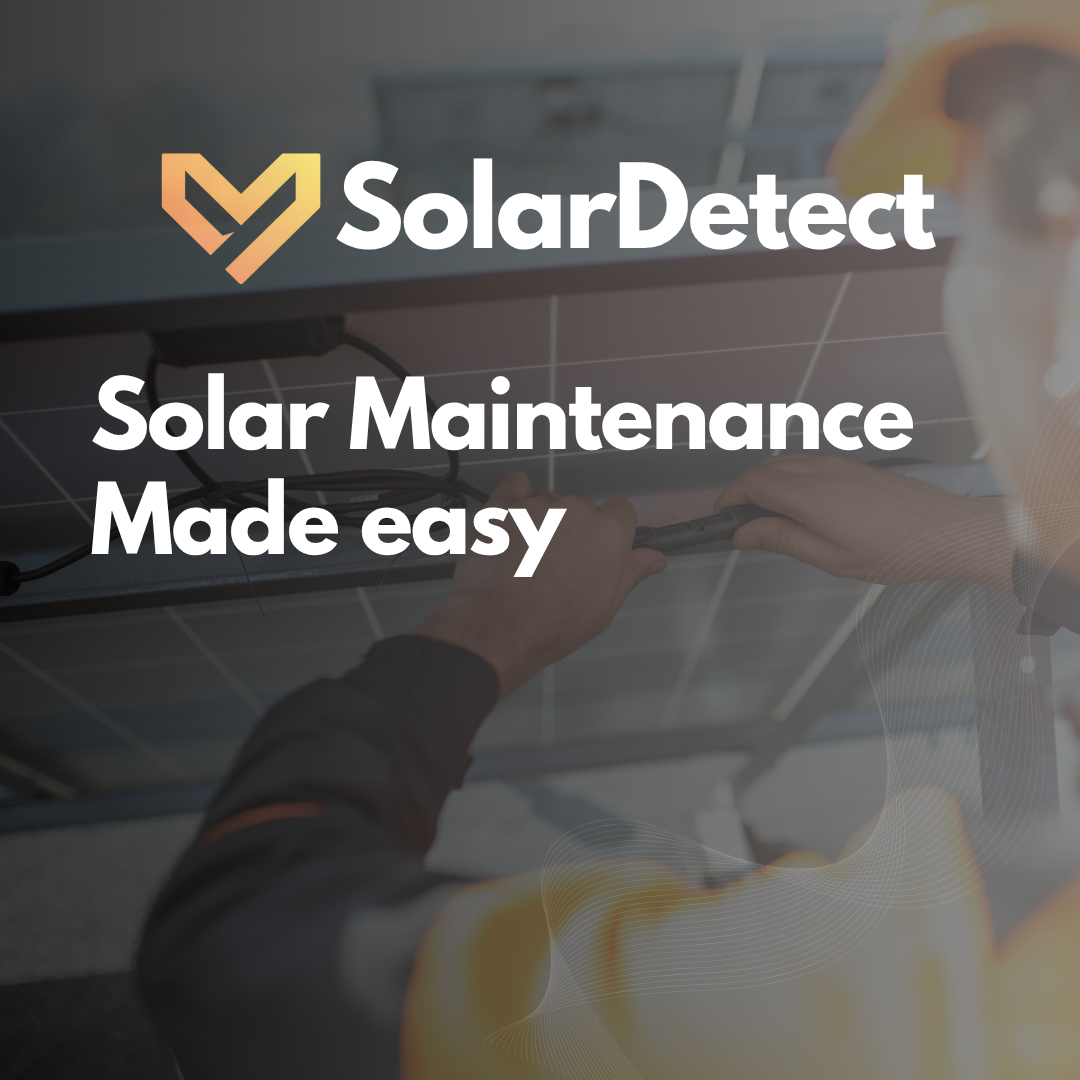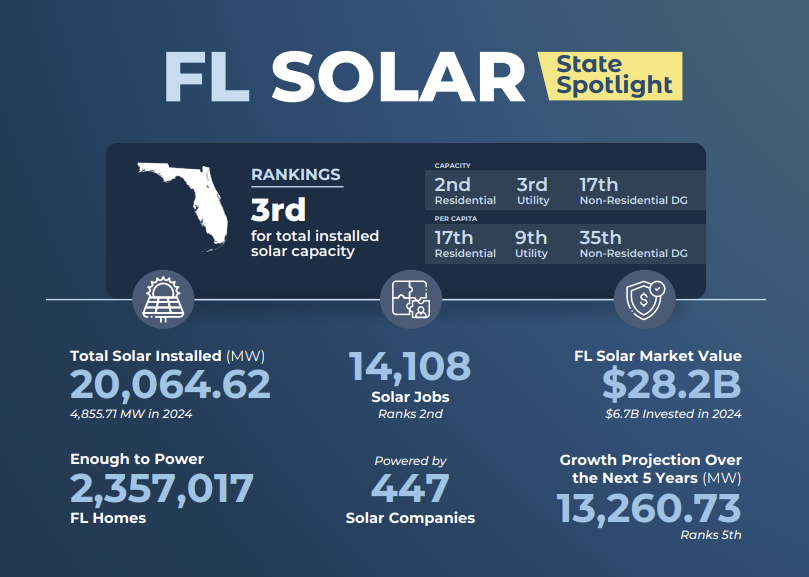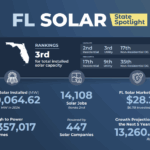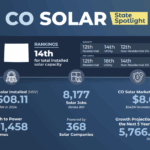The Midwest has been the last adopter of most solar trends in the US, and in following the adoption pattern, unfortunately, we’re starting to see changes to net metering coming to Illinois.
SEIA (Solar Energy Industries Association) projects a 19% decline in residential installations in 2024, driven by sustained high interest rates, lower-than-expected demand, and major installer bankruptcies (Titan Solar and SunPower).
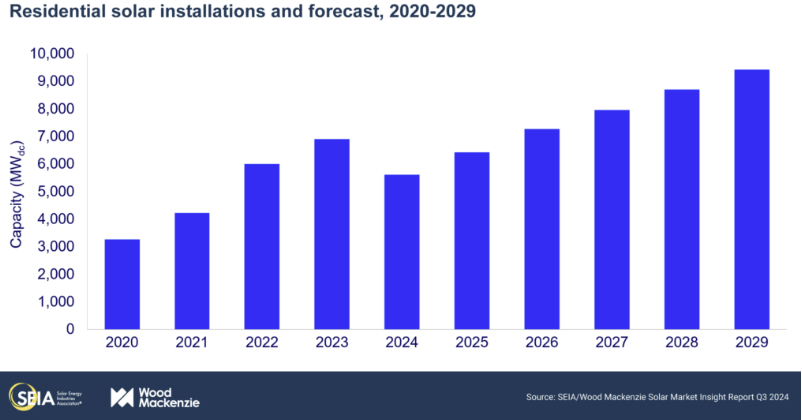
Despite this, Illinois has been one of the few bright spots in the country, with a 79% year-over-year growth in solar power. Illinois solar dominance has been driven largely by strong state incentives and full retail rate net metering. Like many states that pull back their net metering benefits, Illinois may see a softening of demand in 2025.
Table of Contents
What is Net Metering?
For those unfamiliar, net metering is a program from electric utilities that gives homeowners credit for the power they generate from their solar system and send back to the grid. Many states required net metering by law for a time, with the rate given to homeowners set to decline after a certain period.
In Illinois, net metering was first enacted in 2008 and has been paid at a full retail rate. The Climate and Equitable Jobs Act of 2021 extended the full rate net metering deadline until January 1st, 2025. For installations completed after January 1st, homeowners will only get a portion of the credit they used to get.
How Illinois Net Metering Currently Works
The current version of Illinois Net Metering for investor-owned utilities (ComEd, Ameren, MidAmerica) gives solar homeowners a 1:1 credit against all portions of their bill.
If the homeowner is on a fixed-rate plan, they get a kWh (kilowatt-hour) credit on their bill. For example, if their solar system sent 200 kWh out to the grid over the month, the homeowner would have a 200 kWh credit on the bill to offset charges.
If the homeowner is on a real-time pricing rate plan where prices change throughout the day, they get a dollar value credit on their bill for the value of the power. So, if you sent 200 kWh out to the grid when the market price is $0.15/kWh, you’d get a $30 credit on your bill. But if you sent out 200 kWh when the market price was $0.07/kWh, you’d get a $14 credit on the bill.
Homeowners are currently able to apply those credits toward the supply, delivery, and taxes and fees portions of their electric bill, as you will see below:
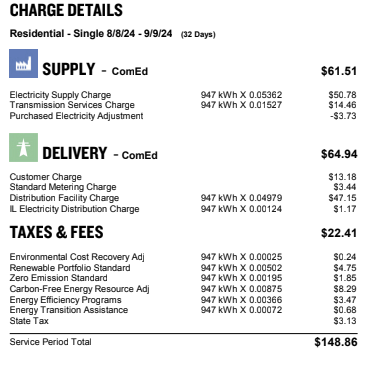
A homeowner with solar would see a line item under each of the above sections with a negative charge, representing net metering credit offsetting their costs. They are also to carry excess credit over month-to-month.
Illinois Net Metering 2.0
Under the new version of net metering set to begin for projects installed after January 1st in ComEd, Ameren, or MidAmerican territory, homeowners will only be credited toward the supply portion of the bill. They will pay full delivery and taxes & fees based on the total amount of power they pull from the grid in that month.
Here’s an example from Illinois Shines, the program behind Illinois’ state incentive:
“With supply-only net metering, electric delivery charges are no longer included in net metering. This means that customers will pay delivery charges for the entire amount of electricity that they pull from the grid, regardless of how much electricity they send back to the grid. With the above example, you would pay supply and transmission charges for 100 kWh, but you would pay delivery charges for the full 500 kWh pulled from the grid.”
https://illinoisshines.com/wp-content/uploads/2024/07/FAQs-Related-to-Changes-in-Net-Metering-In-Illinois-Consumers-26July2024.pdf
Effect on Savings
This is a big change and will have a huge impact on savings for residential solar customers.
In the above example bill, supply represents only about 40% of the total cost, so the majority of the bill will be unaffected by net metering. Costs will still be lower because the total amount of energy pulled from the grid will be lower. Since some of the power produced by solar panels is used directly as it’s produced, homeowners with solar will still benefit from decreased costs.
In the above example, the home used 947 kWh of electricity during the month. Let’s say this house has solar on it and because some of that energy is used right when it’s produced, the total energy pull from the grid would be lower than 947 kWh – let’s say for example it’s 500 kWh.
The delivery and taxes & fees portion of the bill would charge for 500 kWh, but the supply portion would charge for 500 kWh minus whatever was sent out to the grid. If over the month this homeowner sent 100 kWh out to the grid, the supply charge would be for 400 kWh.
The resulting bill for this home would be substantially higher than if net metering was applied to all sections of the bill.
What Can Homeowners Do To Maximize Savings?
Illinois homeowners who will have their solar project completed after January 1st, 2025, have a few options. First, Illinois utilities offer additional incentives for “smart inverters” and batteries.
According to Ameren Illinois, smart inverters meet the equipment standards set out by IEEE 15547-2018 or UL 1741 SA and are distinguished from “regular” inverters in three ways:
- They can modify their real power (Watt) and reactive power (VAR) output to the grid
- They can respond autonomously to voltage frequency changes
- They can respond to communication signals.
Most of the major inverter brands, including SolarEdge, Enphase, Generac, and Tesla, meet those standards and requirements. ComEd and Ameren are offering rebates of $300/ kW DC for solar systems and $300/kWh for battery storage systems to help compensate for some of the cost lost to net metering 2.0.
The smart inverter rebate has existed for a few years now but was unpopular because it reduced a home’s net metering to only the supply portion of the bill. Since supply-only net metering will be standard after January 1st, expect to see this rebate on every solar proposal in Illinois.
The battery rebate of $300/kWh is an exciting offering to the right customer. Its only caveat is that homeowners who take it must enroll in Real-Time Pricing, so anyone taking it needs to be mindful of when they are using power.
Outside of rebates, there are two main ways to adapt to new net metering rules.
Load Shift
Loading shifting involves moving more power use to the middle of the day when the sun is out to utilize more solar power. By moving as much power to the middle of the day as possible, homeowners can minimize the total power sent out to the grid and retain more of its power.
Using high-power consumptive devices like dishwashers, laundry machines, and EV charging. Load shifting may not be possible for people who aren’t home in the middle of the day.
Install Battery Storage
Installing battery storage along with solar power allows homeowners can store energy that would otherwise go out to the grid. When they need extra power, the battery can discharge to provide power to the home. By doing this, you’ll lower the total power pulled from the grid, increasing overall savings.
What If I Currently Have Solar?
If you already have solar in Illinois there’s no need to panic, your net metering isn’t going to change. ComEd and Ameren have committed to grandfathering in anyone currently on full-rate net metering. However, you could move over to the new net metering rules if you make changes to your system.
For ComEd, any changes to the system that require a new interconnection application. A new interconnection application is needed if the AC size of the system changed or a battery was added. Depending on the inverter you have installed, you may be able to add panels without needing to increase the AC system size, so check with your installer before you make any changes.
For Ameren, an increase to the system’s nameplate capacity of more than 100% would cause a change in net metering. For now, it seems that Ameren won’t change the net metering rate if you add a battery.
Deadlines
The new net metering rules will be in effect for systems placed into service on or after January 1st, 2025. Citizens Utility Board has a good explanation of changes.
To receive full net metering benefits, here are the requirements from ComEd and Ameren that must be met:
- The solar system has been installed, tested, and passed a final inspection (if required) by the local authority having jurisdiction (AHJ)
- All required documentation including a Certificate of Completion, Witness Test Request (if applicable), and Net Metering Application must be submitted accurately to the utility by 5 pm Central Time on December 31st, 2024. Documentation includes:
- Photo showing the nameplate with the model number and serial number of the inverter
- Signed approved inspection form from AHJ
- If microinverters are installed, a single file listing all serial numbers is required
- If an energy storage system is installed, a photo of the battery nameplate showing serial numbers.
- The above must be completed accurately and permission to operate must be requested by December 31st at 5 pm. If documents are found to be inaccurate, incomplete, or missing, and the deadline has passed there is no extension period.
- The solar system has been installed, tested, and passed a final inspection (if required) by the local authority having jurisdiction
- All required documentation including a Certificate of Completion, Witness Test Request, and Net Metering Application must be submitted accurately to the utility by 5 pm Central Time on December 31st, 2024. Documentation includes:
- Photos of required signage/placarding
- Proof of insurance
- Installer certification
- Signed approved inspection from the local AHJ (if required)
- The above must be completed accurately and permission to operate must be requested by December 31st at 5 pm. If documents are found to be inaccurate, incomplete, or missing, and the deadline has passed there is no extension period.
Where Do We Go From Here?
With a big change like this comes some worry but there’s no need to panic. At the end of the day, solar still makes sense by lowering the total power consumed in the home and can provide real savings to homeowners who invest. Illinois has plenty of incentives to keep payback periods down.
In other states that have reduced their net metering programs, the number of new installations the following year typically drops. California saw a huge drop in demand when they introduced a new version of net metering, but that was far worse than what is happening in Illinois. Unsurprisingly, net metering decreases lead to increases in battery storage, so successful solar providers will lean heavily into battery benefits.
If you are installing solar and batteries in Illinois, make sure you get the protection provided by SI-30 Total from Solar Insure. With SI-30 Total, homeowners get an independent, insurance-backed 30-year warranty on their panels, inverters, battery, racking, roof penetrations, and labor costs. SI-30 Total also offers one free battery replacement when capacity drops below 50%, ensuring significantly more energy is provided to a home over the system’s lifetime.
Discover more from Solar Insure here:

